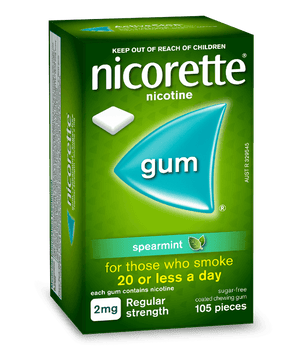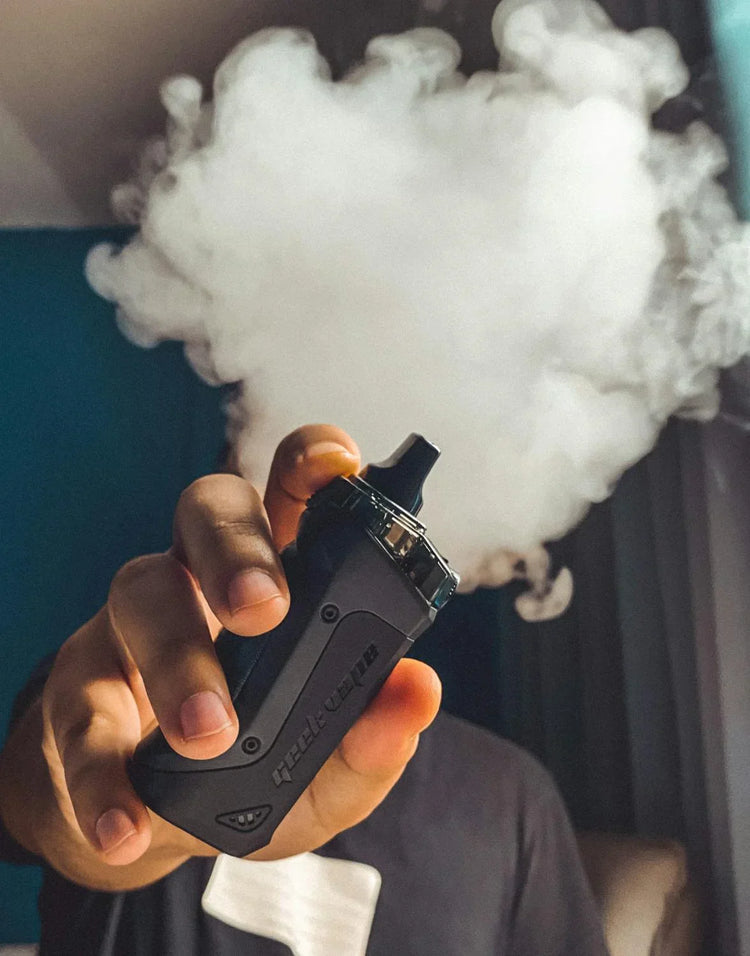
 Instagram
Instagram
How Long Does it Take to Break a Nicotine/Smoking Addiction?

Related products

Nicotine addiction is a complex, multifaceted issue that affects millions of individuals worldwide. Over one billion people are current tobacco users, and the majority of them are addicted to nicotine, according to the World Health Organisation (WHO). The substance, found naturally in the tobacco plant, has been the focal point of numerous health campaigns, as its addictive nature drives the smoking epidemic that's responsible for millions of deaths annually.
What are the challenges and factors affecting Nicotine/Smoking Addiction?
The journey to quit smoking is often fraught with challenges, both physical and psychological. "Quitting smoking is often equated with battles against a formidable enemy. The intense cravings, withdrawal symptoms, and the societal pressures can be overwhelming," remarks Dr. Eleanor Clark, a leading addiction specialist from King's College London.
External factors such as peer pressure, stressful lifestyles, and accessibility to tobacco products further complicate this already intricate process. Research from the British Lung Foundation found that the average smoker tries to quit up to four times before succeeding. This statistic highlights the intricacies of nicotine addiction and the immense effort required to overcome it.
What is Nicotine Addiction?
Nicotine is the primary reason behind tobacco's addictive nature. But what is it about this chemical that makes it so compelling to users? As one delves into the intricacies of nicotine, the sophisticated ways it interacts with the human brain become evident.
What is Nicotine and How Does It Affect the Brain?
Nicotine is an alkaloid found in the tobacco plant. When inhaled or consumed, it reaches the brain within seconds. "Nicotine stimulates the release of dopamine in the brain's pleasure circuits. It's this surge of dopamine that reinforces the act of smoking, making it a rewarding experience for the user," as stated by Dr Andrews Thomson, a neurologist from Cambridge University. This rapid and intense release of dopamine is comparable to the effects seen with drugs like cocaine or heroin, cementing nicotine's position as a highly addictive substance.
The Concept of Addiction: Physical vs. Psychological Dependence
Understanding addiction requires a nuanced approach. On one hand, there's the physical dependence – the body's craving for nicotine to function normally. On the other hand, there's psychological dependence, where the act of smoking becomes an integral part of an individual's routine or a coping mechanism for stress. Professor Helen Roberts, a psychologist at the University of Manchester, explains, "Physical withdrawal can be challenging, but often it's the psychological barriers that make cessation tough. The ritual of lighting up after a meal, during a break, or in moments of stress is deeply ingrained in a smoker's life." It is this dual challenge that makes breaking free from nicotine's grip an arduous task.
How long does it Take to Break the addicTimeline of Nicotine Withdrawal
When a smoker decides to quit, the body embarks on a series of changes as it attempts to heal itself and adjust to the absence of nicotine. This adaptation process, while ultimately beneficial, can bring about a series of withdrawal symptoms.
Immediate Effects: Hours After the Last Cigarette
Almost immediately after stubbing out that final cigarette, the body begins to react. Within mere hours, individuals may experience heightened cravings and anxiety. "The body, so accustomed to regular doses of nicotine, sounds the alarm when it's not delivered. This manifests as intense cravings and anxiety in the early stages," as stated by Dr Karen Mitchell, a leading pulmonologist at St. George's, University of London. Other symptoms might include restlessness, mood swings, and even difficulty concentrating.
Short-term Effects: Days to Weeks
As days turn into weeks, the withdrawal symptoms shift and evolve. Common complaints include irritability, changes in appetite, and even a persistent cough as the lungs start to clear out mucus and debris. "This stage can be particularly challenging," notes Dr. Ayesha Ali, a general practitioner based in Birmingham, "as the smoker not only battles cravings but also grapples with physical symptoms that might mistakenly be interpreted as signs of deteriorating health rather than healing."
Long-term Effects: Months to Years
Over time, the challenges of quitting begin to wane. The cravings, while still present, diminish in intensity. Simultaneously, the health benefits of cessation become more apparent. There's a gradual restoration of lung function, a decreased risk of heart disease, and even improved taste and smell. However, it's essential to note that, as Dr. Simon Clarke from the University of Edinburgh states, "Even years after quitting, there may be occasional cravings, especially during stressful situations or triggers. Yet, the body's resilience is evident in its ability to heal and bounce back."
How Long Do You Get Addicted to Nicotine?

The time it takes to develop a nicotine addiction can vary significantly, but it's astonishing how quickly some individuals can become dependent on this substance.
The Speed at Which Nicotine Can Cause Addiction
Research indicates that some individuals can develop signs of nicotine addiction within days of starting to smoke. A study from the British Medical Journal showcased that over 25% of teenagers exhibited signs of dependence within a month of inhaling their first cigarette. This rapid onset of addiction underlines nicotine's potent nature. Dr. Lara Martin, a leading researcher on addiction from Oxford University, observes, "The speed at which nicotine addiction can develop is alarming. It's a testament to the chemical's powerful influence on the human brain."
Factors That Make Some Individuals More Susceptible to Getting Addicted Faster Than Others
Not everyone gets addicted at the same rate, and there are various factors at play. Genetics, mental health, age, and even socio-economic factors can influence addiction speed. A comprehensive study from University College London found that individuals with a family history of smoking were twice as likely to develop an addiction quickly. Furthermore, adolescents, due to their still-developing brains, are at a heightened risk. Social factors, too, play a part. "Those in high-stress environments or with easy access to tobacco products are more prone," notes Dr. Rebecca Thompson, an addiction specialist. Understanding these factors is crucial in shaping effective anti-smoking campaigns and interventions.
For individuals seeking effective aids to overcome nicotine cravings, Welzo offers a range of top-tier products. The Nicorette Freshmint Gum serves as a discreet solution, delivering controlled amounts of nicotine to your system to reduce the severity of withdrawal symptoms. For a quick and easy application, the Nicorette Quickmist Fresh Mint Spray is an ideal choice, acting fast to curb those sudden urges. Alternatively, the refreshing Nicotinell 1mg Lozenge in Mint offers another effective method to stave off cravings. And if you prefer a cooling sensation, the Nicorette Cools Lozenge in Icy Mint might be the perfect fit. Each product, backed by rigorous testing, ensures you receive the support you need during your nicotine cessation journey.
When Does Quitting Smoking Get Easier?
The trajectory of quitting smoking is not linear. While the challenges are undeniable, there's a light at the end of the tunnel for most individuals.
Overview of the Stages of Cessation and Reduced Cravings
The first few days of quitting smoking are typically the hardest. Yet, as weeks progress, many individuals report a gradual reduction in cravings and an increased sense of well-being. According to the NHS, around the three-month mark, many people start to experience extended periods without even thinking about cigarettes.
The Milestones in the Quitting Journey
Certain milestones in the quitting journey signify more effortless times ahead. For instance, the one-week mark is crucial as most of the nicotine has left the body, and physical withdrawal symptoms begin to subside. Dr. Patricia Woods from the University of Leeds remarks, "While every individual's journey is unique, reaching specific milestones, be it one week, one month, or even one year without smoking, provides a psychological boost, reinforcing the decision to quit."
Physical Symptoms vs. Psychological Cravings
A key aspect of nicotine addiction is the dichotomy between the physical and psychological elements.
Physical withdrawal symptoms, such as headaches, irritability, and insomnia, are the body's reaction to the sudden absence of nicotine. In contrast, psychological cravings stem from the habits and routines built around smoking. Professor Elaine Green from the University of Bristol elaborates, "The hand-to-mouth action, the social breaks with fellow smokers, and using cigarettes as a stress-reliever – these aspects form the psychological chains that can be harder to break than the physical ones."
Why Do I Still Crave Cigarettes After 2 Years?
Even after the physical symptoms have subsided, many wonder why they still crave cigarettes, sometimes years after quitting. Dr. Nathan Hart, a psychologist at University College London, explains, "Nicotine addiction isn't just about the chemical; it's about the memories and associations. Certain triggers, be it a stressful day or a particular social setting, can evoke strong desires, even years after quitting." Recognising these psychological aspects and developing strategies to cope with them is crucial in the long-term cessation journey.
Methods to Aid Nicotine Cessation

Achieving freedom from nicotine addiction often requires a multifaceted approach. While willpower and determination are vital, many individuals benefit from additional support methods to increase their chances of success.
NRTs provide a controlled dose of nicotine, helping to curb cravings while eliminating the harmful effects of smoking. They come in various forms including patches, gums, and inhalers. Dr. Angela Reynolds, a respiratory specialist in Manchester, asserts, "NRTs can effectively double the chances of quitting smoking by alleviating the physical withdrawal symptoms." For individuals exploring a wide variety of NRT solutions, the Niquitin collection offers a trusted range including patches and lozenges designed for gradual nicotine reduction.
Prescription Medications
Beyond NRTs, there are specific prescription medications like Bupropion (Zyban) and Varenicline (Chantix) that can support smokers in their quest to quit. These drugs work on the brain's neurotransmitters, reducing cravings and withdrawal symptoms. "While not everyone will need or benefit from medication," notes Professor Sarah Wright from King's College London, "for some, they can make the difference between a successful quit attempt and a relapse." Individuals seeking professional-grade cessation solutions may explore options curated in the Stop Smoking collection, which includes both over-the-counter and prescription-based support tools.
Behavioural Therapies and Support Groups
Many find solace in behavioural therapies and support groups. These interventions address the psychological dimensions of addiction, providing strategies to handle triggers and stressors. Jane Lewis, a former smoker and now a counsellor in Leeds, shares, "Having a support group, understanding you're not alone in the journey, can be immensely empowering." Combining these therapies with products from the Nicorette collection, known for its tailored nicotine-replacement aids like gums and sprays, can further strengthen a smoker’s resolve to quit.
Alternative Methods
For some, turning to alternative therapies like acupuncture, hypnotherapy, or mindfulness practices can offer additional support. Though the evidence around some of these methods is still developing, many individuals swear by their effectiveness. "It's about finding what resonates with you," suggests Dr. Richard Thompson, a practitioner of holistic medicine in Liverpool, "Whether that's acupuncture to reduce cravings or mindfulness to handle stress."
How Do You Flush Nicotine Out Fast?
While time is the primary factor in eliminating nicotine from the body, there are ways to potentially expedite the detoxification process.
Detox Methods
There are several methods and remedies believed to accelerate the flushing out of nicotine. However, it's essential to approach them with a critical mindset. Dr. Helen Martin, a toxicologist from the University of Glasgow, comments, "While certain methods can aid the body's natural detoxification process, no magic bullet will instantly remove nicotine."
Hydration, Diet, and Exercise
Drinking ample water can support kidney function, assisting in the elimination of toxins. Likewise, a balanced diet rich in antioxidants – found in fruits and vegetables – can boost the body's detoxification processes. Exercise can further enhance circulation, expediting the removal of toxins. "Think of these methods as supporting actors," says nutritionist Dr. Natalie Brown from the University of Cambridge, "They complement the body's natural processes rather than replacing them."
Challenges and Relapses
Quitting smoking is seldom a straightforward journey. Many encounter hurdles along the way, with relapses being a common challenge.
Why Do Relapses Happen?
Relapses can occur due to a range of triggers: stress, alcohol, or even social situations. Professor Ian Clarkson from the University of Edinburgh suggests, "Relapses are a part of many people's cessation journey. They're not a sign of failure but rather an indication of the power of addiction."
What are the Difference Between a Lapse and a Full-blown Relapse?
A single instance of smoking after quitting is termed a 'lapse'. This doesn't mean a complete return to smoking or a full-blown relapse. Recognising this difference is essential. "It's about how you respond to the lapse," notes psychologist Dr. Rebecca Smith from Bristol, "Taking it as a learning opportunity rather than a failure can be pivotal."
Strategies to Prevent or Overcome Relapses
Prevention is always better than cure. Having strategies in place – like avoiding triggers, seeking support, or even practising mindfulness – can be invaluable. For those who do experience a relapse, the key lies in reflection and resilience. As Dr. Paul Harrison, a cessation expert from London, aptly puts it, "Every quit attempt, regardless of its outcome, brings you one step closer to your goal."
Case Studies
Behind every ex-smoker is a unique story of struggle, persistence, and triumph. Sharing these tales can provide inspiration to those on a similar journey, offering tangible proof that overcoming nicotine addiction, while challenging, is indeed possible.
Personal Stories of Triumph Over Nicotine
Meet David from Birmingham. A smoker for over 20 years, he'd tried and failed to quit multiple times. "Every stressful event became an excuse to light up," he admits. But a health scare changed everything. Armed with a combination of nicotine patches and a support group, he's been smoke-free for five years now. "My life has transformed. Not just physically, but mentally too," he beams. On the other side of the spectrum is Priya from London. She smoked only for a few years during university but found quitting tough. Turning to mindfulness and yoga, Priya discovered a unique path to cessation. "For me, it was about replacing one habit with another, healthier one," she explains.
Lessons from Their Experiences
Each success story offers insights. From David, we learn about the power of external triggers and the importance of seeking support. He reminds us, "It's not a journey you need to make alone." Priya's story underscores the significance of understanding one's unique relationship with smoking and crafting a personalised quit plan. Dr. Joanna Field, a smoking cessation counsellor from Leeds, emphasises the value of such stories. "Hearing real-life tales of success can inspire and guide those looking to quit. It provides them a roadmap of sorts, showcasing different strategies that worked for others," she notes.
Conclusion
Nicotine cessation is undeniably a complex journey, fraught with challenges both physical and psychological. This article has delved deep into the multifaceted nature of quitting, from understanding the nuances of addiction to exploring strategies to aid cessation. It's essential to remember that each individual's journey is unique. What works for one might not work for another.
As Dr. Samuel Owens from the University of Oxford aptly puts it, "The key to quitting smoking lies in understanding oneself, seeking support, and most importantly, never giving up." For those embarking on or currently navigating the tumultuous waters of nicotine cessation, remember the tales of David, Priya, and countless others. They stand as testament to the fact that with persistence, support, and the right strategies, overcoming nicotine addiction is within reach. So, draw strength from their stories, seek out the support you need, and continue forth on your quit-smoking journey.



































 Rated Excellent by 26,523+ Reviews
Rated Excellent by 26,523+ Reviews